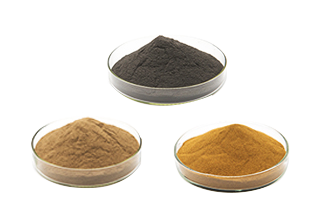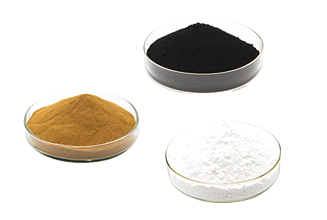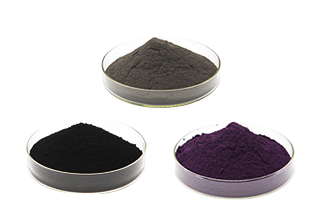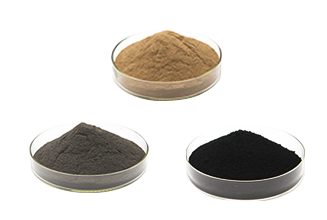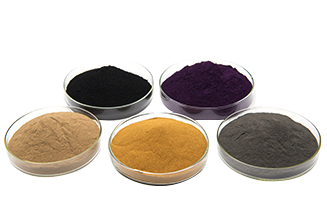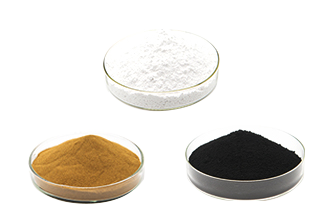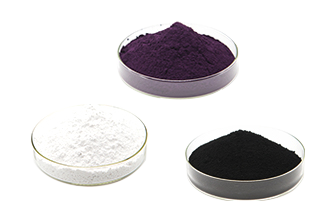Ceramic materials VS Space corrosion
What is the most afraid of spacecraft in space?
Answer: Corrosion!
Will spacecraft be corroded in a vacuum, water-free space environment? In fact, the corrosion it suffers is somewhat the same as we understand. The gas molecules or atoms in the space environment will be adsorbed on the surface of the material and cause the corrosion of the material through a chemical reaction. For example, as part of the US-Russian International Space Station cooperation plan, the Mir space station was the first orbital space station built by the former Soviet Union (returned to Russia after the disintegration of the Soviet Union). According to statistics, during its more than ten years of actual operation in orbit, nearly 2,000 failures occurred, of which 70% of the outer body was corroded. Therefore, "anti-corruption" in space is of utmost importance!
There are three major killers of space corrosion: radiation, oxygen, and temperature!
1 Radiation
There is cosmic radiation invisible to human eyes everywhere in space. It includes not only the residual thermal radiation after the Big Bang, but also the electromagnetic waves, high-energy particles and even cosmic rays released by other celestial bodies. Due to the deflection and absorption of cosmic radiation by the earth's magnetic field and atmosphere, the normal life of mankind on the earth can be guaranteed. However, once separated from the protection of the two and completely exposed to such a strong radiation environment, even wearing a heavy spacesuit, it cannot completely avoid the harm of cosmic radiation to the human body. Faced with such high-intensity radiation in space, spacecraft will also "suffer from it."
In addition, future space activities will inevitably move to high orbits, and even further and deeper space development. The space radiation environment is an important factor affecting future space activities. For low-orbit spacecraft such as the “International Space Station” operating near the earth, they suffer less damage from space radiation due to the natural protection of the earth’s magnetic field, while the space exposed outside the geomagnetic layer is full of high-energy mixed space Radiation field. The high-energy particles in this radiation field may penetrate the protective layer of the spacecraft, thereby causing fatal hazards to spacecraft equipment and astronauts. The traditional passive protection method (increasing the thickness of the mass shielding) can make astronauts and others less exposed to radiation hazards, but the cost of increasing the thickness of the bulkhead is very high.
Ultraviolet radiation released by the sun is one of the causes of corrosion failure of spacecraft. Although ultraviolet light only accounts for about 5% of sunlight, it has a lot of energy. In space, due to the lack of the earth's magnetic field and the "protective barrier" of the atmosphere, the polymer materials on the surface of the spacecraft will cause the polymer to self-oxidize and degrade after absorbing ultraviolet rays.
At this time, anti-radiation ceramic coatings or ceramic fibers can come in handy. For example, special spraying technology is used to heat ceramics and other materials to a molten or semi-melted state, and spray them on the upper surface of spacecraft and important equipment, which can effectively reduce Damage to spacecraft caused by space radiation.
2 Oxygen
When the spacecraft just broke away from the protection of the earth's surface atmosphere, it first came into contact with the low-earth orbit environment (200-700km away from the earth). The residual atmosphere in this area contains about 80% of the total composition. As we all know, oxygen is an important condition for accelerating material corrosion. Under the photolysis of solar short-wave radiation, oxygen molecules are transformed into highly reactive atomic oxygen. Due to the high vacuum and extremely low total gas pressure, the chance of collisions between oxygen atoms and other particles is very small, resulting in oxygen. It is difficult for atoms to recombine into molecular states again. When the high-speed spacecraft and atomic oxygen undergo violent friction and collision, the polymer material on the surface of the spacecraft will undergo high-temperature oxidation, which will degrade its electrical, optical and mechanical properties, and even cause obvious erosion effects. , Which seriously affects the operational safety of the spacecraft.On the other hand, when a spacecraft flies in the atmosphere at ultra-high speed, due to shock compression, viscous friction, etc., the temperature near the wall rises, and the high-temperature air continuously transfers heat to the low-temperature wall, causing intense aerodynamic heating. The wear and heat resistance of the outer surface of the spacecraft is a great test.
In 1995, in a research report submitted by the National Space Administration (NASA), Sil-verman gave the degree of influence of space environmental factors on missions. Among them, atomic oxygen has the greatest impact on the low-Earth orbit environment. Most of the multi-layer thermal insulation components covering most areas of the outer surface of the spacecraft are mostly polymer films with metal coatings. In a low-Earth orbit environment, although the density of atomic oxygen is not high, the energy of the atomic oxygen that hits the surface of a spacecraft flying at high speed is about 4.5 eV, which will cause oxidation and bond failure of the polymer. The method of protecting the thermal control material from atomic oxygen erosion is generally to coat its outer surface with a SiOx film, an indium tin oxide (Indium Tin Oxides, ITO) transparent conductive film, etc.
3 Temperature
In the space travel of spacecraft, in addition to facing the threat of cosmic radiation and atomic oxygen, it also needs to accept extremely "harsh" temperature challenges. In a vacuum environment, due to the lack of air heat transfer and heat dissipation, the surface of the spacecraft directly irradiated by the sun will have a temperature as high as 100°C, while the surface not exposed to the sun will have a temperature as low as -200°C. Such extreme temperature conditions and large-scale heat and cold alternation will affect the stress of the material, and may cause fracture, delamination and even embrittlement of the spacecraft's "coat", greatly shortening its safe service life.
.png)
Ceramic materials such as HfB2, ZrB2, and ZrC can be used for ultra-high temperature ceramic coatings. With the development of ultra-high sonic aircraft, the requirements for its surface anti-ablation and atmospheric erosion resistance are getting higher and higher. Ultra-high temperature ceramics such as HfB2, ZrB2, and ZrC are used as high-temperature coating materials to improve the ablation and resistance of the aircraft surface. Anti-scouring ability has an irreplaceable role.
Summary
If you want to avoid space corrosion as much as possible, you must choose materials that are resistant to radiation, oxidation, corrosion, high temperature, and friction. Through the use of suitable structural materials and surface coating materials is the most critical. In addition to the advantages of radiation resistance, oxidation resistance, corrosion resistance, high temperature resistance, and friction resistance, ceramics also have the characteristics of high strength, high hardness, acid and alkali resistance, and stable physical and chemical properties. It is a very important aerospace material.
Answer: Corrosion!
Will spacecraft be corroded in a vacuum, water-free space environment? In fact, the corrosion it suffers is somewhat the same as we understand. The gas molecules or atoms in the space environment will be adsorbed on the surface of the material and cause the corrosion of the material through a chemical reaction. For example, as part of the US-Russian International Space Station cooperation plan, the Mir space station was the first orbital space station built by the former Soviet Union (returned to Russia after the disintegration of the Soviet Union). According to statistics, during its more than ten years of actual operation in orbit, nearly 2,000 failures occurred, of which 70% of the outer body was corroded. Therefore, "anti-corruption" in space is of utmost importance!
There are three major killers of space corrosion: radiation, oxygen, and temperature!
1 Radiation
There is cosmic radiation invisible to human eyes everywhere in space. It includes not only the residual thermal radiation after the Big Bang, but also the electromagnetic waves, high-energy particles and even cosmic rays released by other celestial bodies. Due to the deflection and absorption of cosmic radiation by the earth's magnetic field and atmosphere, the normal life of mankind on the earth can be guaranteed. However, once separated from the protection of the two and completely exposed to such a strong radiation environment, even wearing a heavy spacesuit, it cannot completely avoid the harm of cosmic radiation to the human body. Faced with such high-intensity radiation in space, spacecraft will also "suffer from it."
In addition, future space activities will inevitably move to high orbits, and even further and deeper space development. The space radiation environment is an important factor affecting future space activities. For low-orbit spacecraft such as the “International Space Station” operating near the earth, they suffer less damage from space radiation due to the natural protection of the earth’s magnetic field, while the space exposed outside the geomagnetic layer is full of high-energy mixed space Radiation field. The high-energy particles in this radiation field may penetrate the protective layer of the spacecraft, thereby causing fatal hazards to spacecraft equipment and astronauts. The traditional passive protection method (increasing the thickness of the mass shielding) can make astronauts and others less exposed to radiation hazards, but the cost of increasing the thickness of the bulkhead is very high.
Ultraviolet radiation released by the sun is one of the causes of corrosion failure of spacecraft. Although ultraviolet light only accounts for about 5% of sunlight, it has a lot of energy. In space, due to the lack of the earth's magnetic field and the "protective barrier" of the atmosphere, the polymer materials on the surface of the spacecraft will cause the polymer to self-oxidize and degrade after absorbing ultraviolet rays.
At this time, anti-radiation ceramic coatings or ceramic fibers can come in handy. For example, special spraying technology is used to heat ceramics and other materials to a molten or semi-melted state, and spray them on the upper surface of spacecraft and important equipment, which can effectively reduce Damage to spacecraft caused by space radiation.
2 Oxygen
When the spacecraft just broke away from the protection of the earth's surface atmosphere, it first came into contact with the low-earth orbit environment (200-700km away from the earth). The residual atmosphere in this area contains about 80% of the total composition. As we all know, oxygen is an important condition for accelerating material corrosion. Under the photolysis of solar short-wave radiation, oxygen molecules are transformed into highly reactive atomic oxygen. Due to the high vacuum and extremely low total gas pressure, the chance of collisions between oxygen atoms and other particles is very small, resulting in oxygen. It is difficult for atoms to recombine into molecular states again. When the high-speed spacecraft and atomic oxygen undergo violent friction and collision, the polymer material on the surface of the spacecraft will undergo high-temperature oxidation, which will degrade its electrical, optical and mechanical properties, and even cause obvious erosion effects. , Which seriously affects the operational safety of the spacecraft.On the other hand, when a spacecraft flies in the atmosphere at ultra-high speed, due to shock compression, viscous friction, etc., the temperature near the wall rises, and the high-temperature air continuously transfers heat to the low-temperature wall, causing intense aerodynamic heating. The wear and heat resistance of the outer surface of the spacecraft is a great test.
In 1995, in a research report submitted by the National Space Administration (NASA), Sil-verman gave the degree of influence of space environmental factors on missions. Among them, atomic oxygen has the greatest impact on the low-Earth orbit environment. Most of the multi-layer thermal insulation components covering most areas of the outer surface of the spacecraft are mostly polymer films with metal coatings. In a low-Earth orbit environment, although the density of atomic oxygen is not high, the energy of the atomic oxygen that hits the surface of a spacecraft flying at high speed is about 4.5 eV, which will cause oxidation and bond failure of the polymer. The method of protecting the thermal control material from atomic oxygen erosion is generally to coat its outer surface with a SiOx film, an indium tin oxide (Indium Tin Oxides, ITO) transparent conductive film, etc.
3 Temperature
In the space travel of spacecraft, in addition to facing the threat of cosmic radiation and atomic oxygen, it also needs to accept extremely "harsh" temperature challenges. In a vacuum environment, due to the lack of air heat transfer and heat dissipation, the surface of the spacecraft directly irradiated by the sun will have a temperature as high as 100°C, while the surface not exposed to the sun will have a temperature as low as -200°C. Such extreme temperature conditions and large-scale heat and cold alternation will affect the stress of the material, and may cause fracture, delamination and even embrittlement of the spacecraft's "coat", greatly shortening its safe service life.
.png)
Ceramic materials such as HfB2, ZrB2, and ZrC can be used for ultra-high temperature ceramic coatings. With the development of ultra-high sonic aircraft, the requirements for its surface anti-ablation and atmospheric erosion resistance are getting higher and higher. Ultra-high temperature ceramics such as HfB2, ZrB2, and ZrC are used as high-temperature coating materials to improve the ablation and resistance of the aircraft surface. Anti-scouring ability has an irreplaceable role.
Summary
If you want to avoid space corrosion as much as possible, you must choose materials that are resistant to radiation, oxidation, corrosion, high temperature, and friction. Through the use of suitable structural materials and surface coating materials is the most critical. In addition to the advantages of radiation resistance, oxidation resistance, corrosion resistance, high temperature resistance, and friction resistance, ceramics also have the characteristics of high strength, high hardness, acid and alkali resistance, and stable physical and chemical properties. It is a very important aerospace material.
related news
-
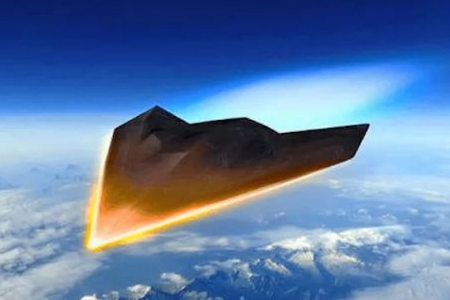 Feb 28, 2022Research on ultra-high temperature ceramic materials(1)
Feb 28, 2022Research on ultra-high temperature ceramic materials(1) -
.jpg) Jan 12, 2022Silicon carbide, Boron carbide - the "king" of the bulletproof industry
Jan 12, 2022Silicon carbide, Boron carbide - the "king" of the bulletproof industry -
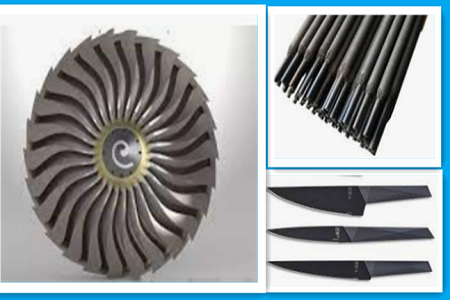 Nov 24, 2021Introduction to the application of titanium carbide (TiC)
Nov 24, 2021Introduction to the application of titanium carbide (TiC) -
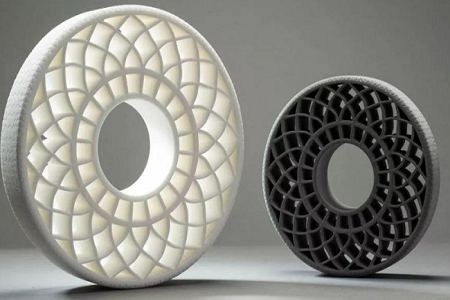 Nov 04, 2021The development status and future direction of 3D printing materials!
Nov 04, 2021The development status and future direction of 3D printing materials!

